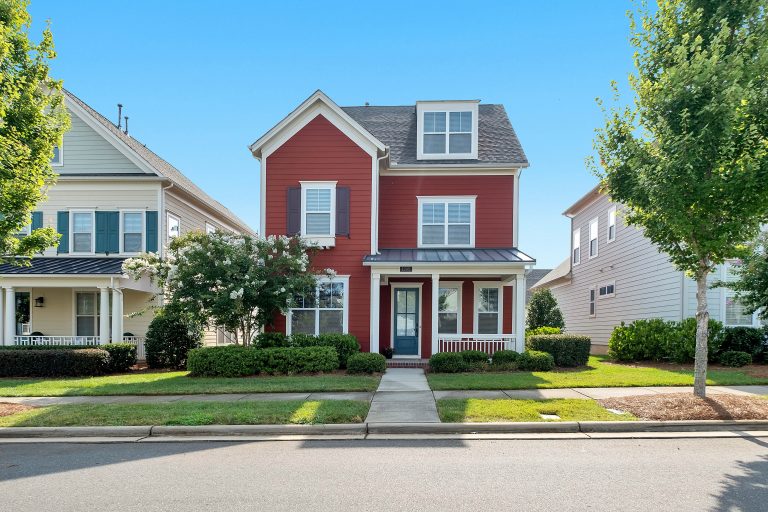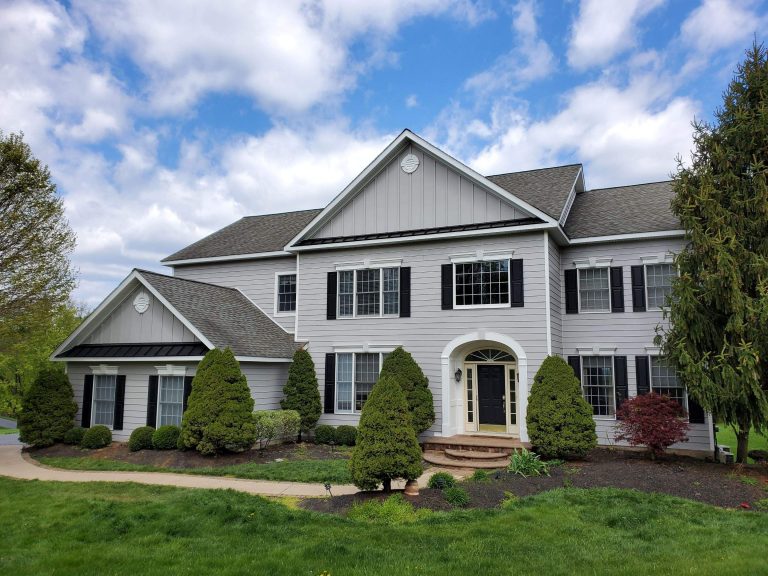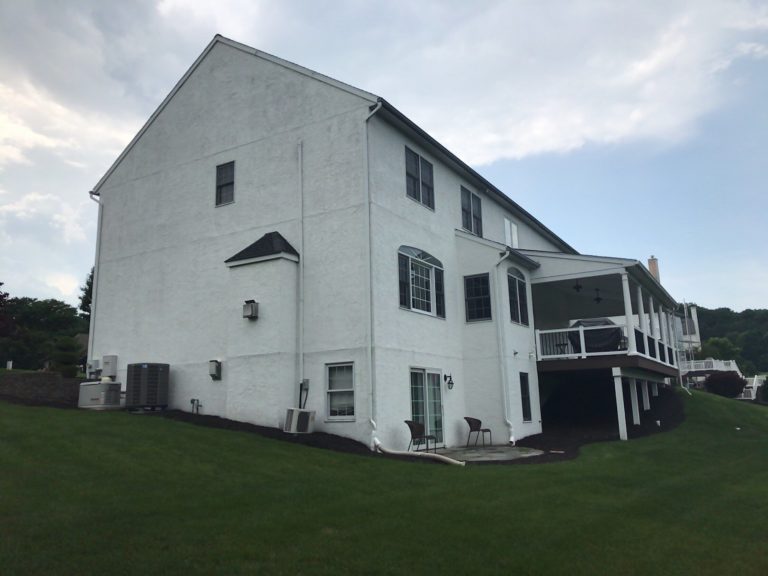The siding market has evolved, providing home builders a wide variety of options in different materials and colors. It’s even possible to combine a selection of siding options that compliment each other. This could be a way to reduce costs while achieving a unique design.
“From a functional point of view, siding gives you protection,” says architect Amy A. Alper. “From an architectural point of view, there’s an interest now in using a variety of materials to highlight special features on a home. For example, using stone or Western red cedar to highlight an entry.”
Don’t forget to consider your home energy needs, which can vary by location and climate. Certain siding selections offer more insulation, better cooling, maximum color retention, or more protection from elements in places prone to severe weather events.

Tried and true, vinyl is the most widely used siding product among home builders – for good reason. One of the great benefits of vinyl is its customizable character, allowing you to find the perfect match to suit your overall aesthetic. And thanks to product advances in recent years, vinyl can give you the look of wood at a lower cost.
Not all siding manufacturers are made equal, though, so make sure to find a vendor who offers a high-performing premium quality product that protects against mold, moisture, and harsh weather elements.

Want that wood clapboard look without all the maintenance? Fiber cement can be molded into shapes that mimic classic wood siding styles. This special feature is why you’ll often find fiber cement in historic home restorations.
Fiber cement siding is made of cement but can resemble wood clapboards or cedar siding, giving you the strength of the former and the curb appeal of the latter. Especially with it being insect, fire, and rot resistant.
Though home builders may shy away from higher upfront costs for material and installation, the low requirement for ongoing maintenance can offset the investment.
It’s telling that many of the siding options in existence today emulate the characteristics of wood. Homeowners who love the natural qualities of wood, like the unique texture and scent, often can’t be swayed to try products that mimic the original.
The classic appeal is still widely sought-after, and selections come in various types of wood, including cypress, pine, spruce, and the popular cedar siding. Styles range from shingles, clapboard, board & batten, and even some engineered wood products. But wood comes with a maintenance commitment in order to preserve the quality. Homeowners often must plan for regular painting to prevent deterioration like rot.
In recent years, however, many wood siding lovers have begun opting for engineered wood siding. This type of siding allows homeowners to achieve the natural wood aesthetic without the maintenance and upkeep.
Siding is a crucial decision when building your home. From durability to aesthetics, you want to get it right. Don’t forget to review your neighborhood HOA restrictions regarding what materials you’re allowed to use for your home.
With all options, professional and quality installation is a must for optimal product performance. And good news! According to US News & World Report, new siding will recoup 75.6% of the cost when you sell your house.
Ready to replace your siding? Contact E&E Contracting today to schedule a consultation and we’ll help you decide what type of siding is right for you!
During the life of any home, repairs to the exterior will be required. Wood exterior peels or chips, metal and plastic siding fade, and stucco absorbs moisture, requiring repair or remediation. When it comes to stucco, each repair job is a unique situation requiring an individualized solution. Therefore, it’s important to understand the basics of stucco and stucco remediation.
A stucco (or render) exterior is a durable and attractive siding lasting approximately 50 years, depending on how well it is maintained. Stucco is fire-resistant, so it is often used for homes in dry climates and near wooded areas prone to wildfires. Stucco is also breathable, allowing moisture absorbed by the home to quickly evaporate.
However, stucco’s reliability depends on who first applied it to the home’s exterior. In the late 1980s and 1990s, the demand for new homes led to many builders taking shortcuts on stucco installation. Things like bad application of the flashing, inferior windows, and not enough stucco layers caused tremendous problems within years. Today, home buyers are discovering moisture beneath their stucco and rotten framework within the structure.
Small cracks in a home’s facade might not seem like an urgent issue, however, with stucco, moisture intrusion is a situation you want to act on quickly. In fact, while often invisible, the first sign of mold invasion most homeowners see are black streaks emanating from windows and chimneys.

When a contractor specializing in stucco inspects your home, they’ll search specific locations for stucco failure and recommend replacing damaged areas with new flashing and fresh stucco. Simple repairs include resealing cracks, tears, and gaps around windows, flashing, and joints.
Specialists who repair stucco will fix any cosmetic issues and resurface the facade to match the finishing texture, yet will not give you a full inspection report on possible hidden water damage and structural issues. Stucco repair is a temporary fix and should be considered routine maintenance to your home.
When mold, leaks, and moisture are appearing on the walls and ceilings inside your home, it will require a complex solution. Additionally, after rain or snow, if the stucco absorbs more moisture or if it takes longer for it to dry, consult a stucco remediation expert.
Before calling a stucco remediation expert, document incidents of:
The first thing a reputable stucco specialist will do after a visual inspection is run moisture tests on the exterior of your home. This evaluation of your home’s exterior should include the roof, gutters, windows, doors, light fixtures, exhaust pipes, and vents. The subsequent report will help determine whether stucco remediation is required.

The long term solution of remediation is an investment that maintains the integrity of your home. A full remediation includes new windows, sheathing, framing, a draining house wrap, flashing, a rain screen, and three layers of stucco which requires a highly skilled professional to accomplish. That said, stucco remediation is an extensive, complex project that requires a good deal of time and money.
Due to stucco’s intricacies, it’s common for homeowners to opt for a different type of siding to replace their stucco, like vinyl. This is often a simpler, less expensive alternative to replacing damaged stucco with new stucco.
At the end of the day, whether you require some small stucco repairs or an extensive replacement, trust E&E Contracting to handle your project. Contact us today for more information on our stucco services.